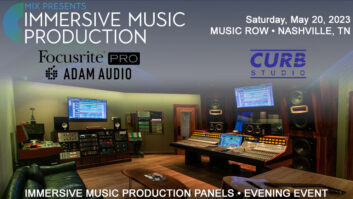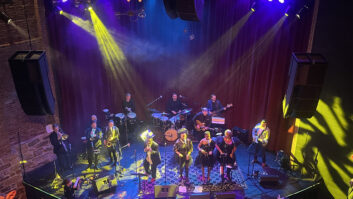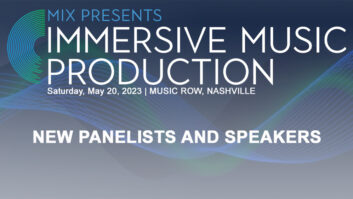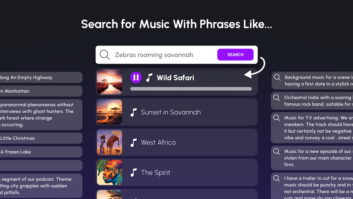While the theme of this month’s issue is “Where’s the Money?” and the emphasis is on the production community, it behooves all audio professionals to understand just where their “product” lands. Those who work in the 24-bit/192k world may lament the widespread adoption of MP3 playback and consumer compression, but as with the advent of the cassette and the Walkman, it cannot be ignored.
The Big Picture
As of the end of 2005, music sales shrunk about $2.5 billion from their peak in 1999. What’s to blame? It’s easy to point at illegal file sharing, but competition with other entertainment products (videogames, etc.) is also taking a toll. However, thanks to healthy, new revenue streams such as mobile apps, the industry is starting to come out of the tailspin: Last year’s sales are only down about 8 percent from the previous year, and overall revenues are predicted to rise to $15 billion in 2010, with the most marked increase in the online market. For now, conventional music media (aka CDs) still dominate the market.
Barely Breaking Even?
Half of music consumers think $0.99 is a “fair price” to pay for a single and another 20 percent think it’s “a bargain.” So why aren’t online sites such as Apple iTunes swimming in money? The answer? Big cuts go to distribution and payments (40 percent). Online music subscriptions offer more profit for the distributor, but have yet to reach mass-market appeal. Structures will evolve as ringtones and mastertones grow even more popular and wireless carriers become more involved.
Music Ownership in 2006
Despite concerted efforts from the RIAA and others, piracy hasn’t gone away. It’s estimated that nearly 40 percent of U.S. households online still use illegal P2P sites to acquire music. And although music consumers may seem indifferent toward the value of an actual copyright, they are demonstrating an increased collective conscience about stealing music.
According to a 2006 poll, when music listeners were asked if they cared whether the music they downloaded onto their computer is copyrighted, they showed ambivalence:
However, when asked if they considered if free downloads unauthorized by the copyright holder is stealing, they answered positive:
Raised on File Sharing
It’s no surprise that young adults are the biggest adopters of digital music, with the 18 to 24-year-old group being the leaders in purchasing CDs both online and offline, as well as burning, ripping, sharing and maintaining digital music collections — though tech-savvy teenagers are not far behind.
Mobile Media Madness
Last fall, Apple and Motorola unveiled the ROKR, a mobile phone that holds up to 100 songs and comes with iTunes installed. The phone is offered through Cingular Wireless, which is planning a separate download service this year. As MP3-equipped cellular phones like the ROKR eventually surpass MP3 players in unit sales, new questions will be raised about licensing revenue streams, the role of cellular carriers as distributors and the value of a song.
Music Discovery Methods
Although there are more ways than ever to learn about new music (most notably, promotion on prime-time television dramas), for the most part, listeners still learn about new music via traditional methods, including FM radio and word of mouth.
What’s the main way you find out about new music these days?
Drive Time Is King
Lots of high-tech gadgets serve as audio devices, from MP3 players to laptops. But consumers still spend the most amount of time listening in the car.
iPod, At a Glance
Number of iPods Apple shipped in Q4 of 2005: 14,043,000
Number of computers Apple shipped: 1,254,000
Apple net quarterly profit for same quarter: $565 million
Percent growth in iPod sales over the previous year: 207
Number of songs purchased on iTunes as of February 23, 2006: 1 billion
Average number of iTunes songs sold to iPods: 20
Audio Adoption
Despite reports in recent years sounding the music industry’s death knell, it’s obvious that new music channels and consumer patterns are on the rise, creating more opportunities for revenues, with HD and satellite radio services and podcasting showing the biggest growth potential. Note to entrepreneurial spirits: As podcasts grow in popularity and quality, “monetizing” is sure to follow.
Ringtone Explosion
It would be hard to overestimate the popularity of ringtones: Some project that by 2010, ringtone sales will grow as high as $900 million — in other words, six percent of U.S. consumer music spending. One quarter of mobile phone owners have downloaded ringtones, marking a fourfold increase during the past 12 months. That’s 30 million people in the U.S. alone. By the end of this year, 95 percent of wireless subscribers will have ringtone-capable handsets. For an idea of the audience potential, just look across the pond: Last year, a mix of the wildly popular “Crazy Frog” ringtone (set to a remix of the “Axel F” theme from Beverly Hills Cop) topped the UK music charts for weeks, outselling contenders like Coldplay four to one.
Interestingly, ringtone consumers are more likely to have paid for the tones they download, despite higher fees than for a full-length, higher-quality version of song.







